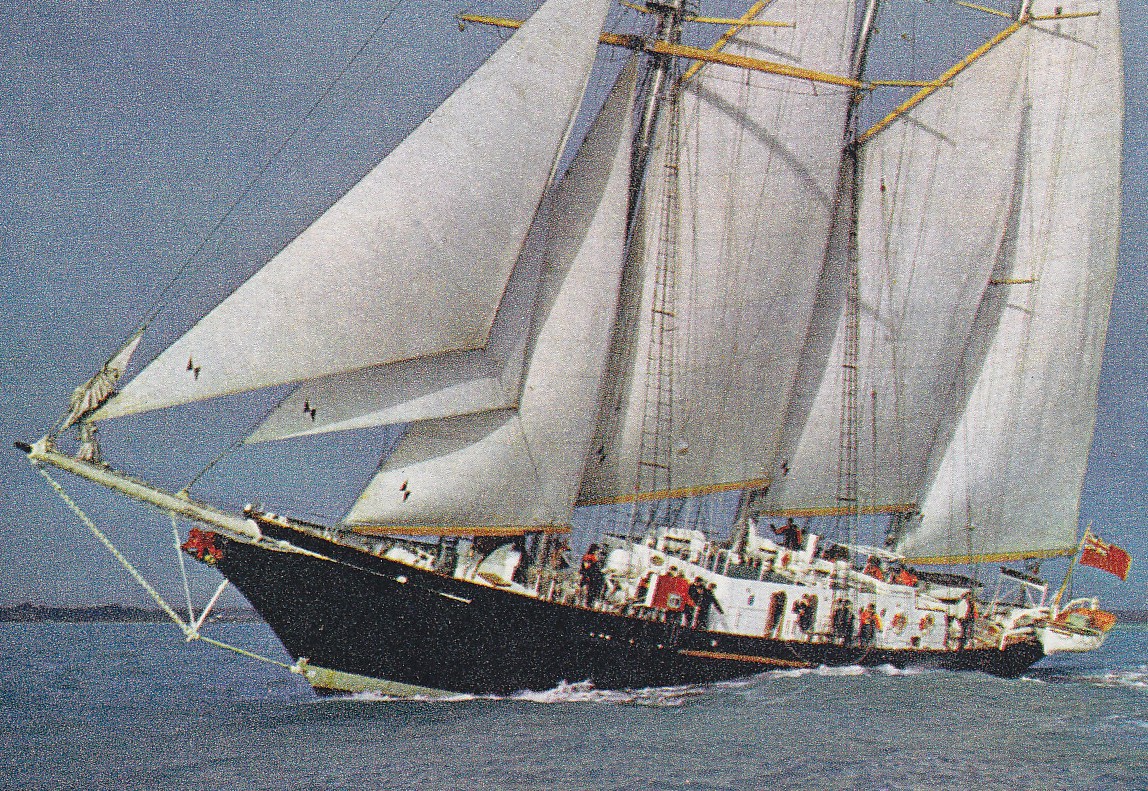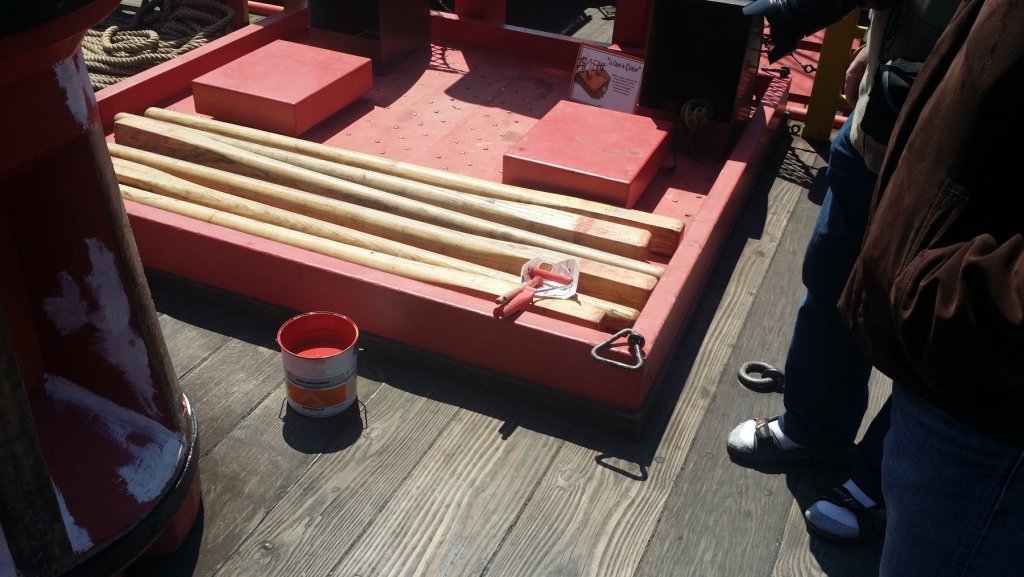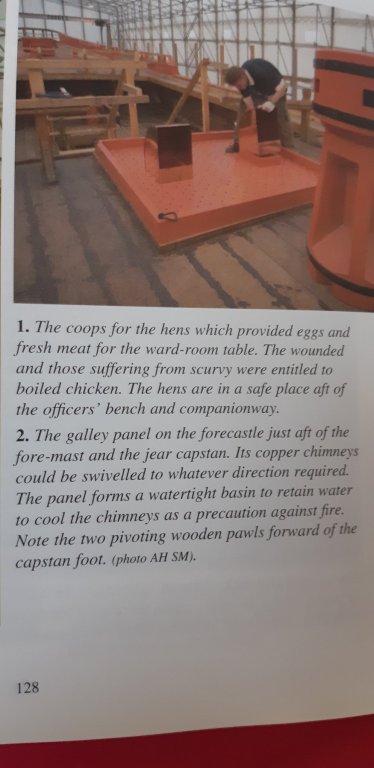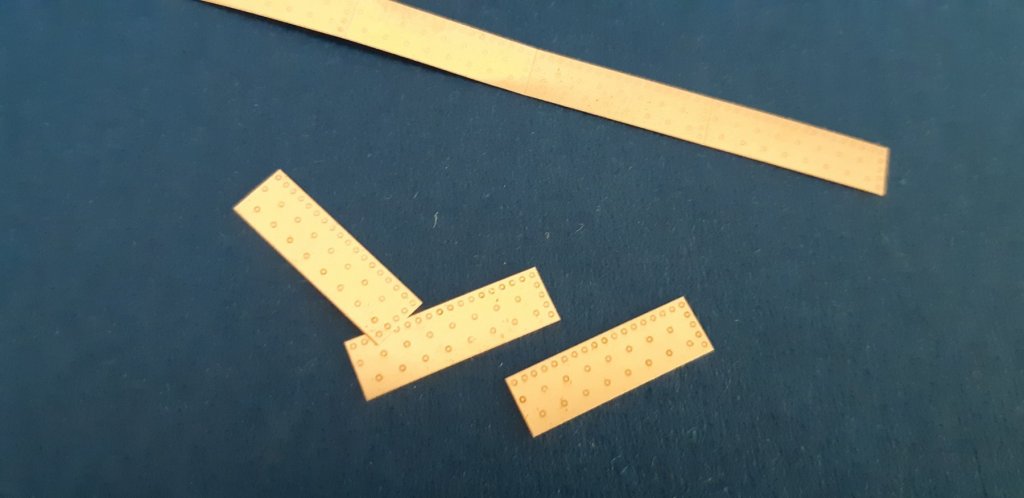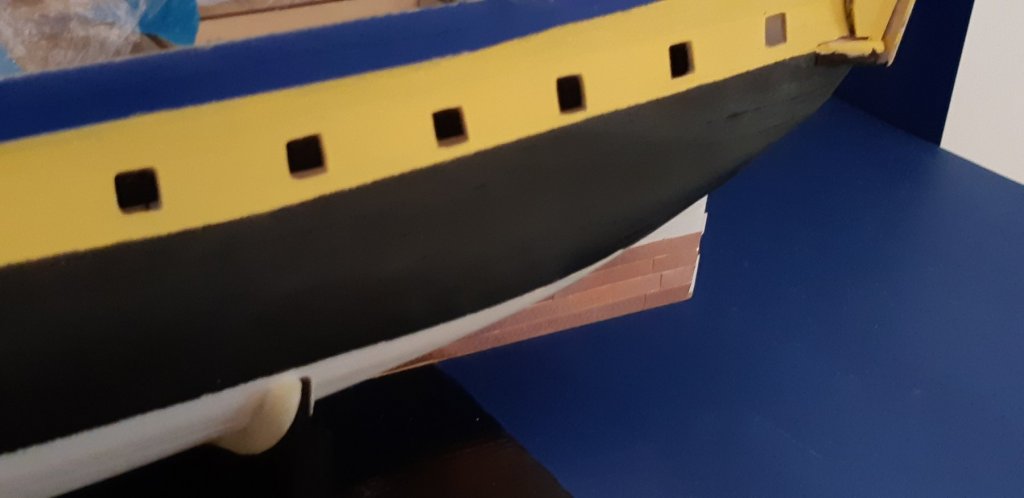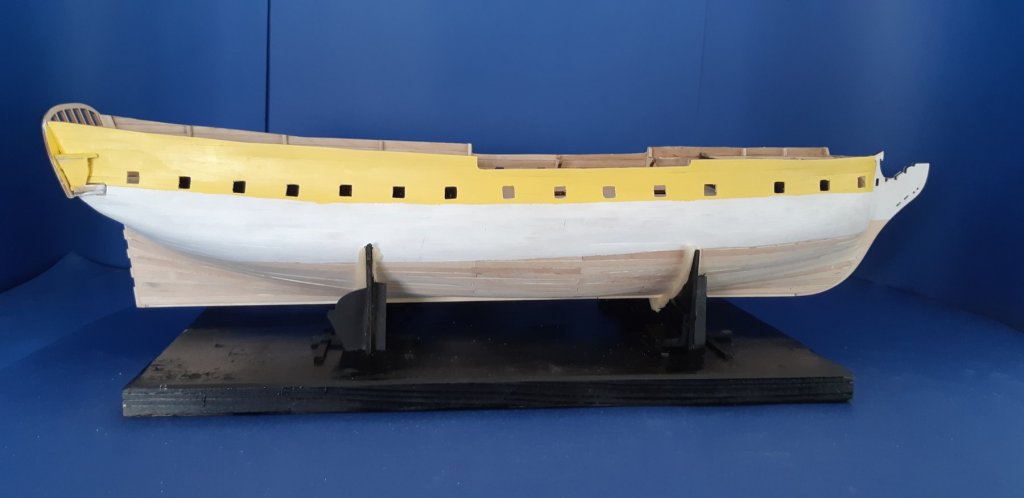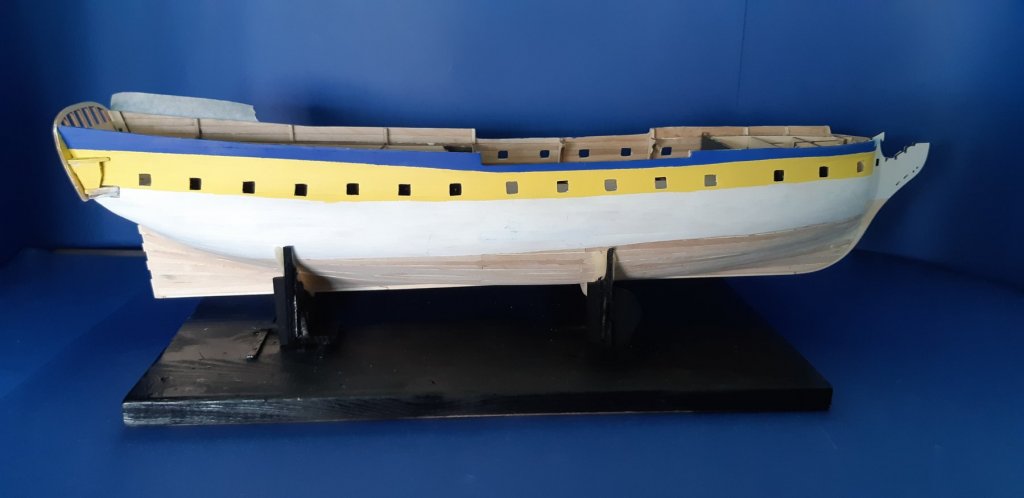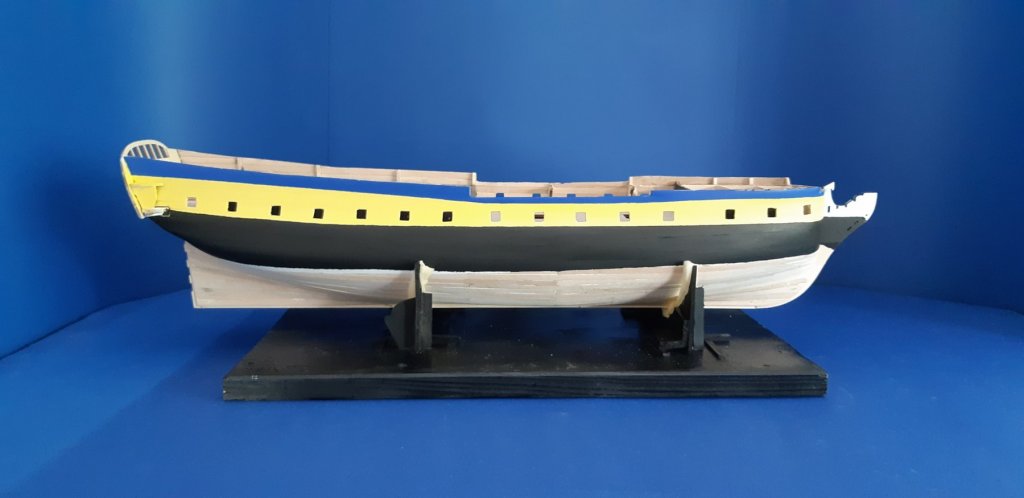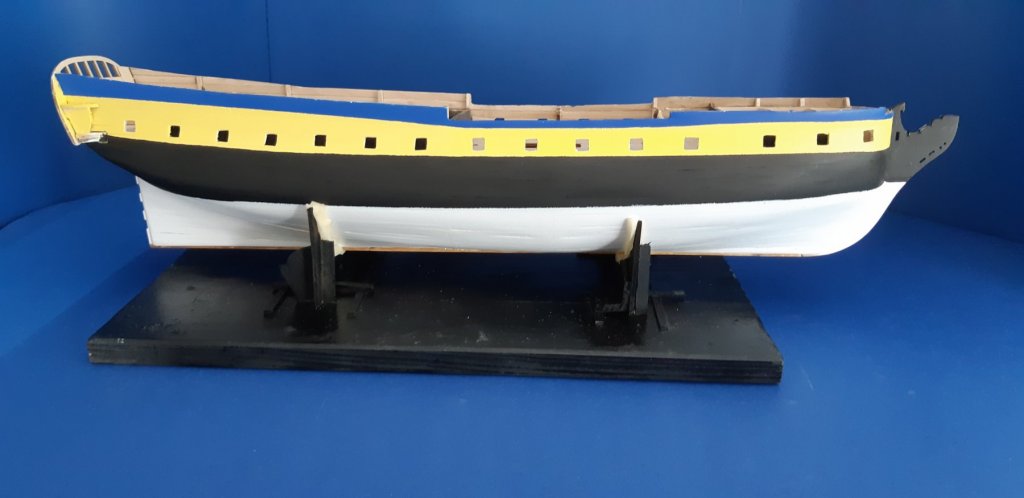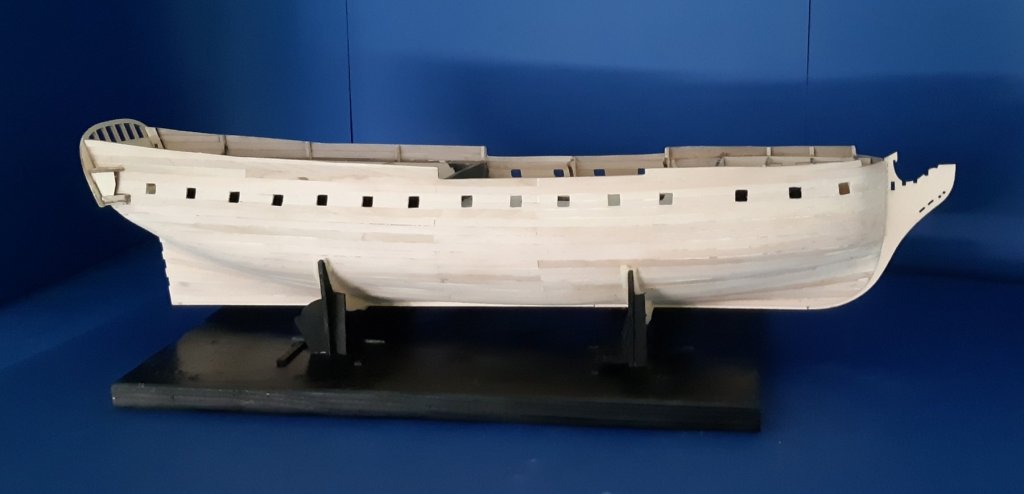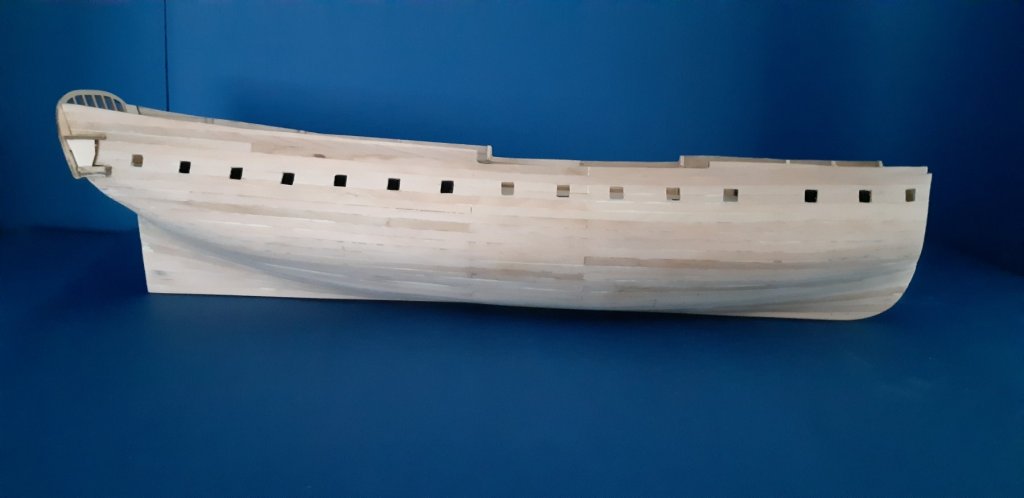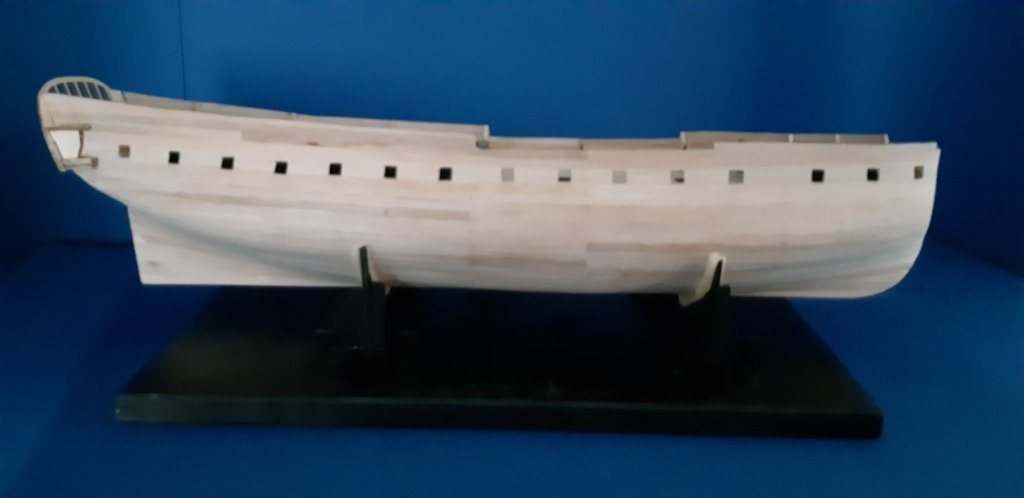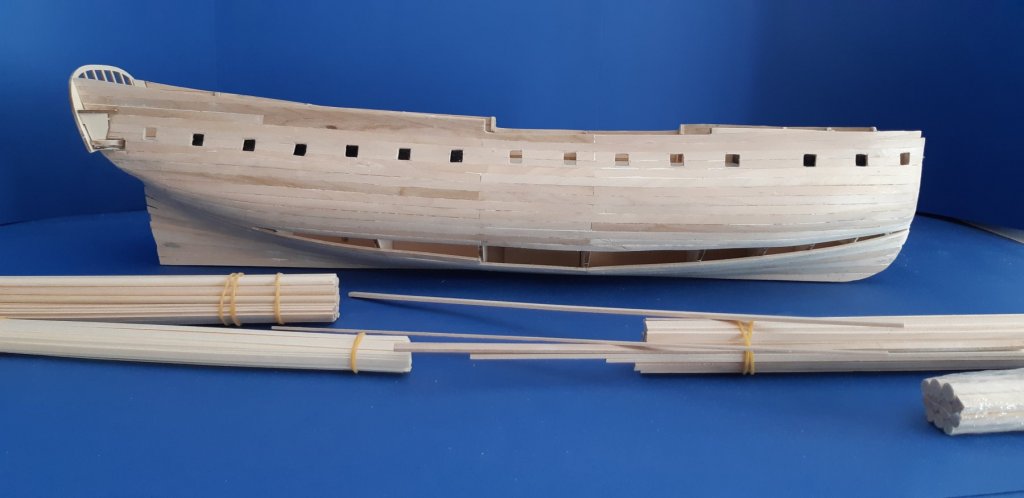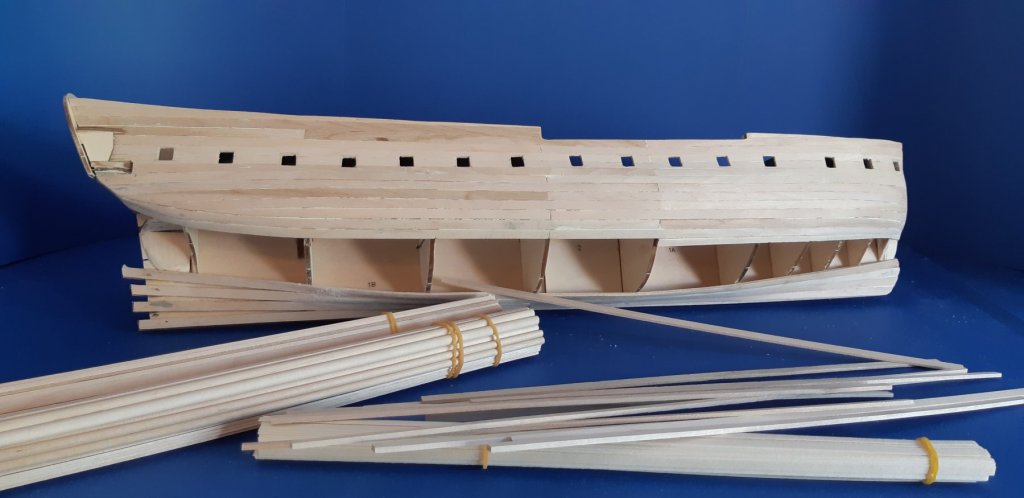-
Posts
1,232 -
Joined
-
Last visited
Content Type
Profiles
Forums
Gallery
Events
Everything posted by MESSIS
-
@wefalck Eberhard thank you... the site its a treasure! The archive is enormous. It seems I have to look it up through a pc.... smart phone is too small and too slow. Although as you just mentioned the picture of Ballu's book is already verified, meaning that such cooling systems did exist as a facility of the 18th century ship galleys. Still I believe that rather that was a cast iron panel as the galley it self (it was actually the roof of the stove) and not a riveted panel and ofcourse it wasnt welded or solderd. Though the picture I took myself on the replica of Hermione shows a rivetted panel. @bruce d thank you Bruce... yes those could only be found by accident 😊 Christos
-
@Bob Cleek Dear Bob, thank you again for your quick response and very informative comments. Saying "iron" I was actually thinking of the stove's cast iron. It seems to me that the stove manufacturer would have used the same material also for the stove's roof (duct panel). So a cast iron panel -not a welded one- appeared to me the natural material to be used. Also Ballu in the above picture, specifies copper, but only for the two chimneys. And that maybe was more appropriate in case the two chimneys could really swivel according to the wind direction.... the copper would have made chimney swivel lighter (due to its lighter weight than the cast iron). Thank you again for shearing so much on this very interesting issue. Christos
-
@Bob Cleek And then when I though its was rather impossible to reach to an answer.... Deus ex machina arrived. (The got from the machine arrived). The term was coined from the conventions of Greek tragedy, where a machine is used to bring actors playing gods onto the stage The idea was introduced by Aeschylus and was used often to resolve the conflict and conclude the drama. And there was you, as a modern Deus ex machina, giving -actualy- a complete and all around lecture on the subject! Thank you Sir. Thank you very much...amazing answer! Christos Ps small additional question... if I may, why using cooper instead of iron on larger models. Was it because copper exchanges heat with environment faster than iron?Because no way that would have been cheaper.
-
Thank you @mtaylor, for your response and for the thorough research. Here is what Ballu says: He shows a picture of the works on the today's replica, but the text below refers to the past stating, "Its copper chimneys could (not can) be swivelled.... " meaning they could then in 1779? So this system existed also then? Or that concerns only the today's safety arrangements made for the replica to be able to travel in our days?
-
Coppering or copper sheathing. Started today using the Amati plates 17x5 mm. The size is within the sizes used by the french navy at that time. Amati has left and right plates, to indicate the overlapping. In my case I used the overlap to the upper and stern side of the plate, simulating the way was done then. My experience building Hermione the first time say two pkts of plates shall be enough. Thats 518 plates each pkt. Am going to use about a thousand.... as many as was actually used in 1779 on Hermione. Cost incl. shipm. 60 euros.
-
painting the hull. Most of us dont like painted ships.... wood is warm and beautiful... no comparison! Still I enjoy painting Hermione. She looks very happy with those colours of her. I have used the pigments of Hermione of the 17th century, which the Hermione-Lafayette History Committee found after extensive research. A pantone data table with those, is given in the AL kit. Plus the fact that a gentleman from AL was kind enough to send me over the corresponding paints from Vallejo. So... the Blue of the King, for the bulwarks. A costly colour then, as it contained ground lapis lazouli The Naples yellow, a widely used recipe in the 17th and 18th century in France, was used for the level of the gun-ports. And the remaining hull over the waterline was painted black. And ofcourse the underwater hull was white, which a few months after the launching of the ship, had been replaced by a copper sheathing. Last but not least the red (from red ochre and natural clay) "to hide the blood" according to popular rumour, was used for all the gun-deck, the quarter deck and the fore castle. Here are the pictures of the painting procedure. Note 1: The white paint seen over the waterline, its the vallejo primer (its a thin primer) which I brushed painted as thinly as I could, in order to allow the underneath planking to be visible. Note 2: The white colour, under the waterline its a spray primer which I sprayed thick enough , in order to prepare the hull for the copper sheathing.
-
Yes! You may be right @mtaylor. The other time building the brass nose of my bireme made me crazy... two days long could not put two pieces together, until I put them into acetone and then it became a piece of cake.
-
😉 @cog dear friend, Is it a sign of old age... or is it just old age? Ofcourse important its not the age but how you feel. I remember my late father when with 82 he got upset and stopped going to his club because "too many older gentlemen there... he preferred something more appropriate for his age".... and that worried my sister a lot, calling me all the time and asking his whereabouts. 👍 @Dutchman yes ofcourse... actually thats the whole fan in this blog.... Its a getting together of people from every corner of our planet! I believe thats a wonderful feeling!!
-
Great Steven.... wish you a new visit soon. Do you know the prof. I mentioned above? Christos
-
Steven very interesting discussion over history! I was just thinking of Prof. Ahrweiler. (Helene Glykatzi-Ahrweiler is Greek academic Byzantinologist at Sorbonne Uni France ) She wrote a few good books. I was impressed of an older book of her "The byzantine ideology".... remarkable. I dont know about the english title I have just gave, because I got it in greek. The book made me visit Konstantinoupolis.... fascinating place!!! CHRISTOS
-
Hi everyone, Am back again. 18 days grandson kept the shipyard shutdown. Now he is back to UK... time to catch up some work. Just recalculated the remaining plank gaps. It seems a joggler will be needed on each side. And ofcourse two correction planks, a long one and a small short one. Started preparing the jogglers... and installed two bow planks, on each side, which are the last in full width. The next planks two close the bow will be a joggler almost identical in each side, which will be projected after the third frame into two thinner planks. Lets see how well it goes tomorrow.
-
@Richardjjs Just found out admiaralitys is a caldercraft paint.... cheers Christos
- 527 replies
-
- caldercraft
- victory
-
(and 1 more)
Tagged with:
-
Thank you Robert for your quick response. It seems am going for a paint and some graphite over it. And may be some dry amber. Christos @Richardjjs I was told about the admiarality's flat black and the Tamiya deep black iron... is great for realistic cannons painting. It seems as you said I have to try and the Caldercraft paint as well.
- 527 replies
-
- caldercraft
- victory
-
(and 1 more)
Tagged with:
-
Robert the finished cannon looks amazing realistic! Well done. Were the cannons brass or were they just some cast metal? Because I failed the other time I used the Birchwood Brass Black... the cannons were not brass.
- 527 replies
-
- caldercraft
- victory
-
(and 1 more)
Tagged with:
-
Few planks remain and ofcourse the correction plank(I guess two of them will be needed-a longer and a short one ) to close the hull planking.. Stealers were also used 4 each side at the stern. According to my logbook I just conclude 100 hours of work. Now its party time 🥂my grand son is coming to Cyprus and am closing the shipyard down for the time he is staying with grandma and grandpa. 😊🐖🐄🐓🦆
-
So planking upwards now. Leaving some spaces on the bottom stern to catch the turn correctly. Ofcourse those will be filled at the end with a few stealers. Am coming nearer to the end. Though am still stressed with the out coming of the ending at the bow, of the rest of the planks. I guess, if the planks get too thin, then maybe I will have to use a joggler or two
About us
Modelshipworld - Advancing Ship Modeling through Research
SSL Secured
Your security is important for us so this Website is SSL-Secured
NRG Mailing Address
Nautical Research Guild
237 South Lincoln Street
Westmont IL, 60559-1917
Model Ship World ® and the MSW logo are Registered Trademarks, and belong to the Nautical Research Guild (United States Patent and Trademark Office: No. 6,929,264 & No. 6,929,274, registered Dec. 20, 2022)
Helpful Links
About the NRG
If you enjoy building ship models that are historically accurate as well as beautiful, then The Nautical Research Guild (NRG) is just right for you.
The Guild is a non-profit educational organization whose mission is to “Advance Ship Modeling Through Research”. We provide support to our members in their efforts to raise the quality of their model ships.
The Nautical Research Guild has published our world-renowned quarterly magazine, The Nautical Research Journal, since 1955. The pages of the Journal are full of articles by accomplished ship modelers who show you how they create those exquisite details on their models, and by maritime historians who show you the correct details to build. The Journal is available in both print and digital editions. Go to the NRG web site (www.thenrg.org) to download a complimentary digital copy of the Journal. The NRG also publishes plan sets, books and compilations of back issues of the Journal and the former Ships in Scale and Model Ship Builder magazines.

